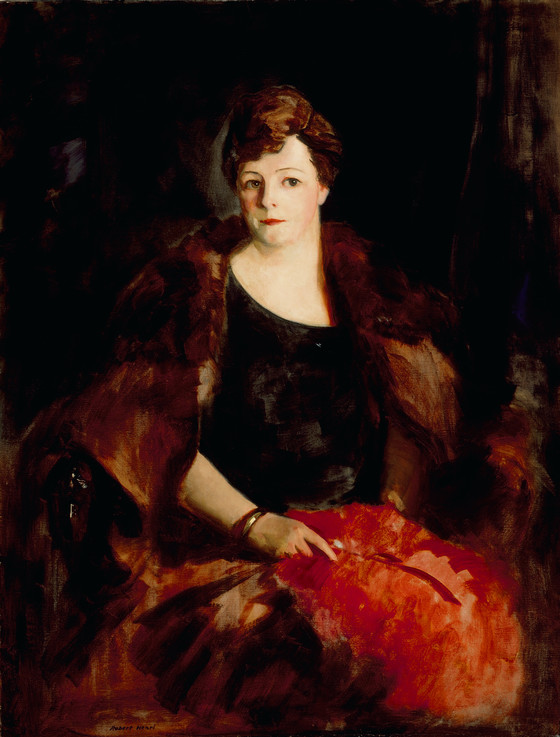Ada M. Sanberg (1885-1947) met William Preston Harrison in Chicago in 1910 and married him in 1915....
Ada M. Sanberg (1885-1947) met William Preston Harrison in Chicago in 1910 and married him in 1915. Theirs was the story of a poor girl marrying a rich man, and possibly because of this circumstance the couple eventually moved to Los Angeles. They had one child, Carter Preston.
Henri was supposed to paint the portrait in the summer of 1924, at the same time that WAYMAN ADAMS was originally scheduled to paint Mr. Harrison’s portrait, but Henri’s trip to Los Angeles was delayed until February of the following year. The artist was never very anxious to accept portrait commissions and viewed them mainly as a source of income. Because Harrison had been a strong supporter of his art, he probably felt he could not refuse the commission. Henri’s sentiment notwith-standing, the portrait is a good example of the artist’s late style. Instead of the thick, robust paint surface of his earlier paintings, this portrait has a thinner and flatter appearance.
Henri’s portrayal of Ada Harrison is somewhat conservative, probably due to her social prominence and to the fact that the work was intended to hang in the museum next to Adams’s portrait of her husband. Mrs. Harrison was a large woman, and although Henri did not falsify this aspect of her appearance, he did give her an air of dignity. He minimized Mrs. Harrison’s bulk somewhat by showing her in a black dress partially covered by a furtrimmed, deep orange wrap. She holds a large, feathered fan. In his early paintings of dancers Henri often included such fans. The fan does not contradict the image of Mrs. Harrison’s respectability but does add an important color note to this basically dark painting.
Harrison noted in 1935 that his wife had become the victim of endless criticism because of the portrait. He felt that much of it was due to other women’s jealousy over its being in a public museum and regretted not having had the sitter’s identity remain anonymous. Harrison was dismayed with this problem partly because he viewed the painting as a superb example of Henri’s art rather than primarily as a portrait of his wife.
More...



